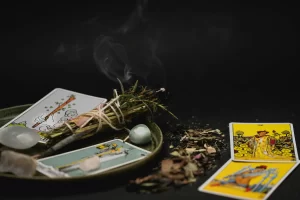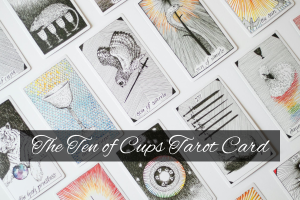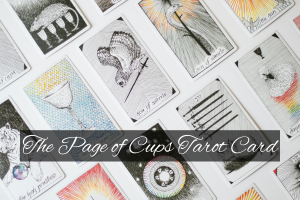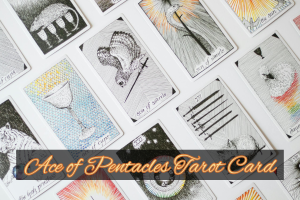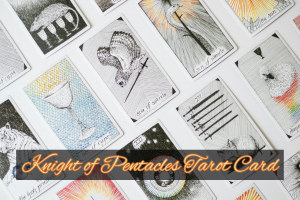The Tarot deck, a tapestry of 78 cards woven with human truths, is like a wise old friend who never shies away from the hard stuff. Each card holds a mirror to our joys, fears, and quiet revelations, and among the Minor Arcana, the Five of Pentacles stands out as a poignant symbol of struggle, loss, and the flicker of hope that persists in the dark. Anchored in the suit of Pentacles, which roots us in the earthy realms of wealth, work, and physical reality, this card captures the raw ache of scarcity—whether it’s money, health, or belonging—while whispering that help is closer than it seems.
In this deep dive, we’ll wander through the Five of Pentacles’ rich history, decode its haunting symbolism, unpack its layered meanings, and explore how its energy can guide us through life’s colder moments. By the end, you’ll feel the chill of this card’s lessons and the warmth of its hidden light. So, grab a blanket, maybe a hot drink to thaw your soul, and let’s step into the shadowed, resilient world of the Five of Pentacles.
Historical Roots: The Tarot and the Pentacles Suit
To truly connect with the Five of Pentacles, let’s drift back to the Tarot’s beginnings. Imagine 15th-century Italy—nobles in velvet robes, gathered around polished tables, playing a game called tarocchi. Decks like the Visconti-Sforza, with their hand-painted kings and queens, were the Renaissance equivalent of a luxury gadget—beautiful, exclusive, and meant for fun. These early cards had no mystical bent; they were for laughter and bets, not soul-searching. It wasn’t until the 18th century that the Tarot’s story pivoted. Mystics like Antoine Court de Gébelin and Jean-Baptiste Alliette (Etteilla) saw the cards as more than play—they were portals to wisdom, layered with symbols that spoke to the human spirit. Thus, the divinatory Tarot took shape, a tool for insight and reflection.
The Minor Arcana’s four suits—Pentacles, Cups, Swords, and Wands—echo traditional playing cards, with Pentacles tied to Diamonds. Governed by the element of earth, the Pentacles suit grounds us in the tangible: money, labor, health, and the things we can touch or lose. Historically, pentacles (sometimes shown as coins) carried the weight of survival—think of a farmer’s harvest or a beggar’s empty palm. The number five in Tarot often signals disruption or challenge, a shake-up of what came before. In the Five of Pentacles, that challenge is scarcity, following the Ace’s promise, the Two’s balance, the Three’s teamwork, and the Four’s control. It’s the moment the ground slips, leaving you to find your footing in the cold.
Symbolism Unveiled: The Five of Pentacles in the Rider-Waite Deck
The Rider-Waite Tarot deck, brought to life in 1909 by Pamela Colman Smith under Arthur Edward Waite’s guidance, gives us a Five of Pentacles that’s both heartbreaking and hopeful. It’s a scene that tugs at you, like a memory you didn’t know you had.
Picture this: two ragged figures limp through a snowstorm, heads bowed against the wind. One leans on crutches, bandaged and frail; the other huddles in a tattered shawl. Above them, a church window glows with warm light, its five pentacles arranged like a promise. The figures don’t look up—they trudge past, lost in their struggle. The sky’s dark, the ground icy, yet that window shines, unnoticed but ever-present. It’s a moment of hardship, raw and real, with a quiet hint of salvation just out of sight.
Let’s unpack the symbols:
- The Figures: Worn and weary, they embody lack—poverty, illness, or exclusion. They’re you when life feels like a slog, when hope’s hard to find.
- The Snow: Cold and relentless, it represents adversity—financial strain, emotional chill, or physical pain.
- The Church Window: Lit with warmth, its pentacles suggest help—material aid, spiritual comfort, or community—just beyond reach.
- The Five Pentacles: Arranged in the window, they symbolize what’s lost or unattained, yet their glow hints at potential still within grasp.
- The Darkness: The stormy night wraps the scene in isolation, amplifying the sense of being cut off.
Together, these elements paint the Five of Pentacles as a card of struggle tempered by possibility. It’s about feeling left out in the cold but missing the door to warmth that’s closer than you think.
Core Meaning: The Ache of Scarcity
At its heart, the Five of Pentacles is about lack and the emotions that come with it—fear, shame, or despair. It’s the moment your bank account dips too low, an illness lingers, or you feel like you don’t belong. As the fifth card in the Pentacles suit, it disrupts the stability of the Four, the synergy of the Three, and the flow of the Two, plunging you into a test of resilience. When it shows up in a reading, it’s a sigh from the universe: things are tough, but there’s more to this story.
This card carries the weight of hardship but never leaves you hopeless. It’s the job loss that stings, the rejection that burns, the loneliness that chills—yet it’s also the unnoticed soup kitchen nearby, the friend ready to listen, the inner strength waiting to rise. The Five of Pentacles doesn’t sugarcoat the pain, but it nudges you to look up, to see the light you’ve missed. It’s a card of endurance, asking you to keep walking, even when the wind’s against you, because warmth is never as far as it feels.
Upright vs. Reversed: Two Sides of the Cold
Like all Tarot cards, the Five of Pentacles shifts its tone depending on its orientation. Upright, it’s a raw portrait of struggle; reversed, it’s a step toward relief or a deeper shadow.
Upright Five of Pentacles
When the card stands tall, it’s all about the chill of lack. Its key themes include:
- Scarcity: Financial strain, poor health, or material loss—a sense of not having enough.
- Isolation: Feeling left out, rejected, or alone, like you’re on the outside looking in.
- Despair: The emotional toll of hardship, tinged with worry or shame.
Imagine drawing this card and feeling its bite: bills stack up, a cold leaves you drained, or a friend group drifts away. It’s a heavy moment, naming the struggle but urging you to keep going.
Reversed Five of Pentacles
Flip it over, and the storm begins to clear—or darkens further. The reversed Five suggests a shift:
- Recovery: Help arrives—a job offer, a doctor’s plan, or a hand extended in friendship.
- Hope Renewed: The light in the window becomes visible; you start to believe things can improve.
- Deeper Struggle: Or, it’s a refusal to seek help, sinking further into fear or pride.
Here, the card might point to accepting a loan to tide you over or stubbornly ignoring support out of shame. It’s not an end—it’s a choice to reach out or retreat.
Context Matters: The Five in Different Readings
The Five of Pentacles is a storyteller, shaping its message to fit the question or spread. Here’s how it might show up across life’s domains:
- Career: Job loss, underpayment, or feeling undervalued—like your work’s invisible.
- Finances: Money’s tight—overdue bills, unexpected costs, or living paycheck to paycheck.
- Health: Illness or fatigue saps your strength, or mental health takes a hit.
- Relationships: Loneliness or disconnection—maybe a fallout or feeling like you don’t fit.
In a spread, its position adds depth. In the “past,” it might recall a time you felt destitute (or overcame it). In the “present,” it’s your current struggle—or a missed chance for help. In the “future,” it warns of lean times or promises relief. Pair it with the Star, and it could hint at hope after hardship; alongside the Ten of Swords, it might amplify a sense of total loss.
Living the Five: Practical Ways to Tap Its Energy
The Five of Pentacles isn’t just a card—it’s a guide through the storm. Here’s how to weave its lessons into your life:
- Meditation: Picture yourself in the snow, then imagine a warm light ahead. Step toward it, feeling the shift.
- Journaling: Write about what feels scarce—money, love, energy. Then list one small way to seek help or hope.
- Ritual: Light a candle (white for hope, gold for abundance). Whisper a wish for strength, then let it burn.
- Affirmation: Try this: “I am enough, and help is near when I need it.”
In a reading, ask questions like: “What am I overlooking?” or “Where can I find support?” The card becomes a lantern, lighting the path through the cold.
The Five of Pentacles Today: A Modern Lens
In our fast-paced, unequal world, the Five of Pentacles feels like a snapshot of 2025’s struggles. It’s the gig worker scraping by, the family hit by rising costs, the person scrolling social media feeling left behind. Modern Tarot readers stretch its meaning to fit our times—maybe it’s the burnout of hustle culture, the isolation of remote work, or the weight of climate anxiety.
Yet its earthy soul remains. In a society that equates worth with wealth, the Five of Pentacles challenges that lie, reminding us that lack doesn’t define us. It’s not about never falling; it’s about noticing the hands ready to lift you—community programs, mental health hotlines, or a neighbor’s kindness. In a world of noise, it’s a call to pause, look up, and step toward the light, no matter how faint.
Conclusion: Finding the Warmth
The Five of Pentacles is a stark beauty—a portrait of struggle laced with hope. It’s the cold of scarcity and the glow of help unseen. From its Renaissance roots to its modern echo, this card spans time, offering a timeless truth: hardship is real, but so is resilience, and you’re never as alone as you feel.
So, when the Five of Pentacles finds you—whether in a spread, a quiet ache, or a tough day—don’t turn away. What’s it showing you? Where’s the light you’ve missed? Keep walking, eyes up, heart open. The warmth is closer than you think.

